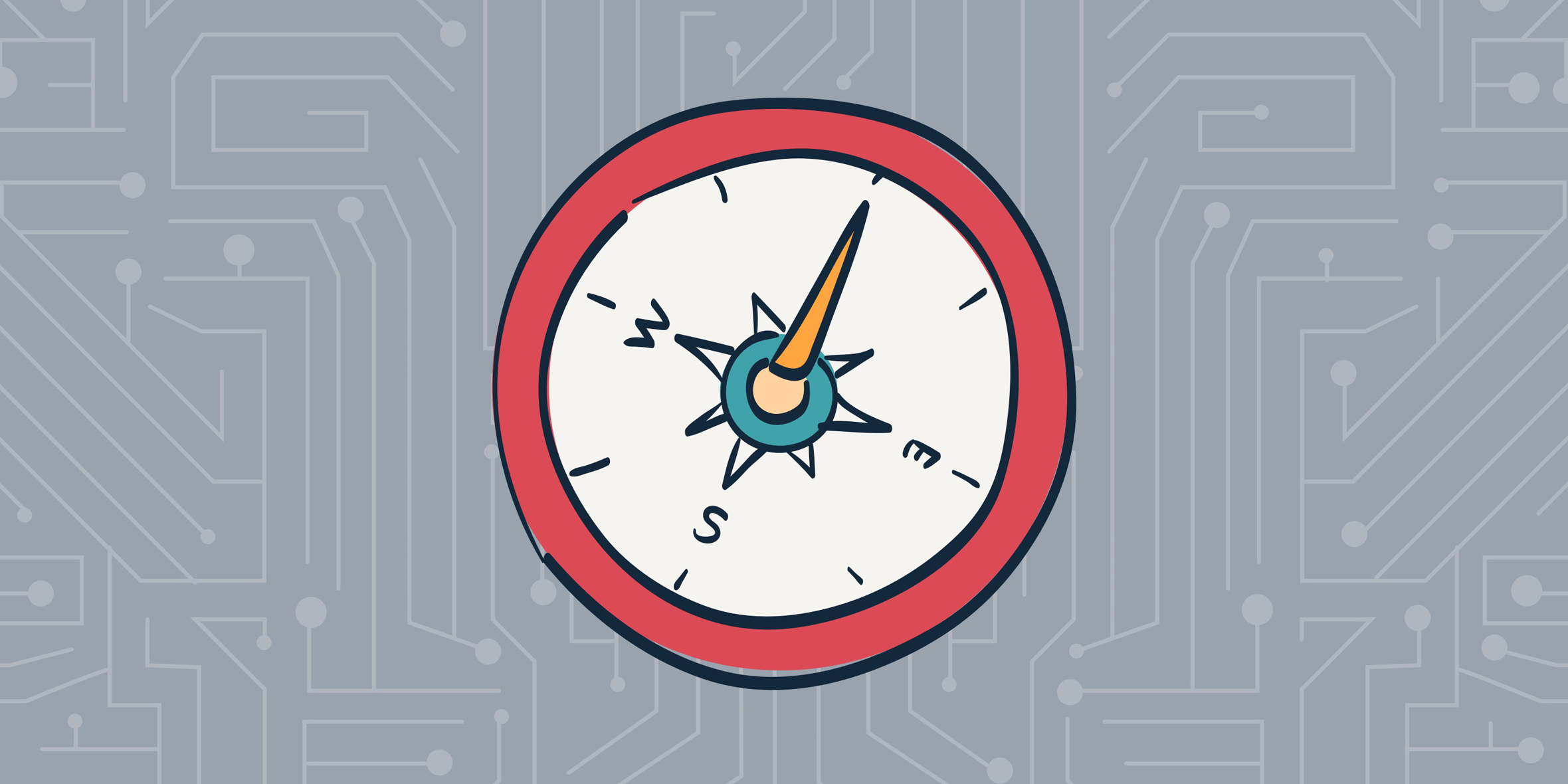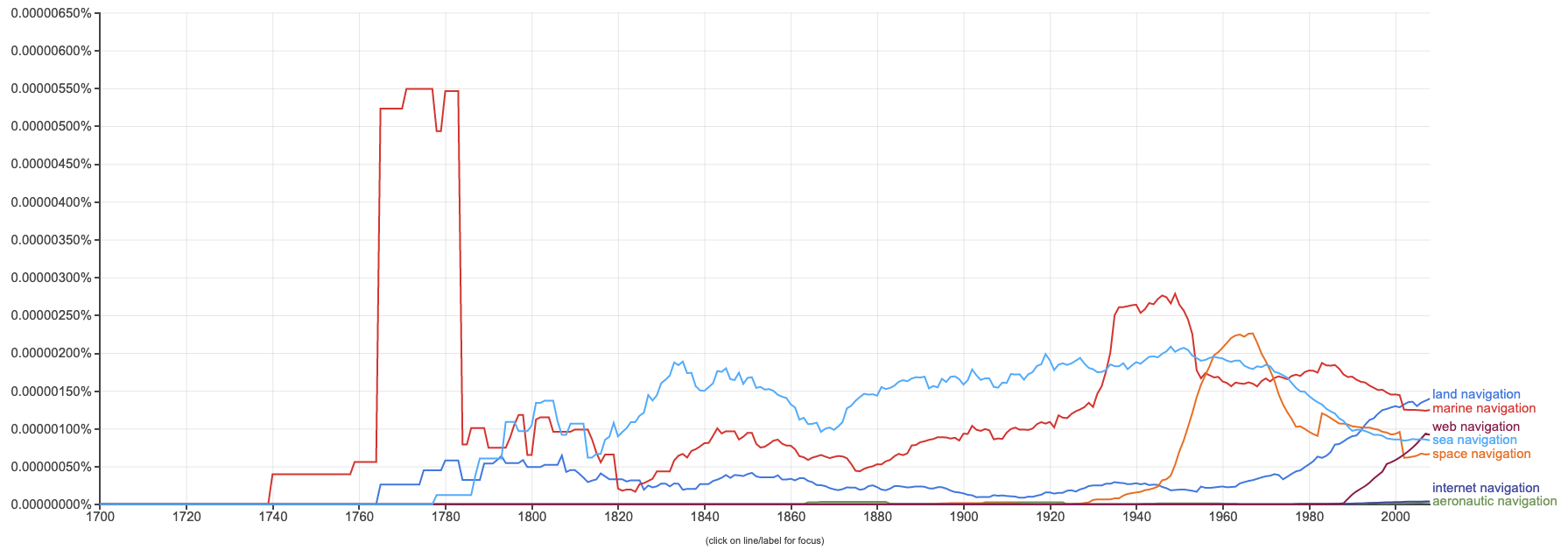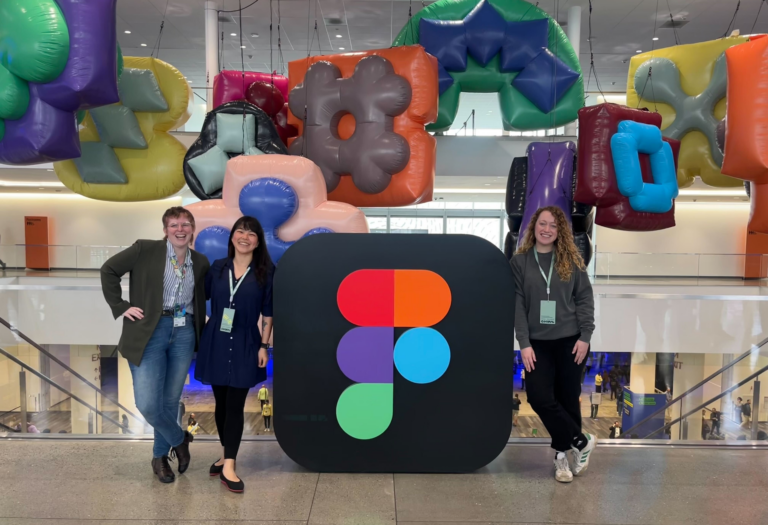Navigation is exploration

Navigation, as a field of study, predates the web. Of course it does. At its core, navigation is the systematic process of monitoring and controlling movement through space (and sometimes through time). It’s the organized explanation of any skill that helps people to determine their position and direction.
In order to know where a person is in physical space, we need a point of comparison—another position or location with which to compare a user. A person cannot be at Point B if Point A doesn’t exist. A person cannot be at both Point A and Point B simultaneously.
During the European medieval period, as well as in Ancient Greece, the ability to navigate was defined as a mechanical artform, an ancient precursor to mechanical engineering. It was a practical skill, but was considered uncreative, and was meant to be performed by lower-class families. It was unbecoming for the wealthy, and it wasn’t held in high regard like literature, philosophy, mathematics, logic, grammar, rhetoric, and astronomy. It wasn’t considered a means to advancing the human condition or a function essential to civic life. For most of history, navigation was intrinsically linked to seafaring jobs, best left to the sailors and merchants. It follows that the Latin root for navigation is “navis,” for ship.

Many techniques for making sense of one’s location were based on maintaining a Point A. For some sailors reconnoitering through the Mediterranean, this meant always staying in sight of land. Soon, the need to maintain this fixed point evolved into celestial navigation—the ability to navigate without land. To create a position between distance, time, and space. The scale of geography expanded. This method of navigation involved comparing oneself against a single star, asterism, or constellation in order to determine one’s location coupled with the time of day. The star being one’s Point A.
Eventually, land navigation evolved into marine navigation. Marine navigation into aeronautical navigation and space navigation. And space navigation informed cyberspace navigation.
All of this work, this exploration through human history, to answer the fundamental questions, “Where am I now? Where am I going?”
Navigating the Web
The Internet is not so different from a vast sea, an unfathomable ocean whose edge is initially unseen. It is a type of virtual geography. An immaterial, liminal space. Yet, using navigation, we humans eventually mapped those aqueous, physical edges. We came, we saw, we conquered. We mapped it.
The Internet is not so different from physical space in the cosmos. Websites are born and websites die at a rapid clip. They are birthed like distant stars. They circle one another, they link and unlink. Traffic flows freely between places. There is an almost gravitational force from the largest sites—so easily reachable, pulling others into their orbit.
The world’s first website went online December 20, 1990. It still lives, making our earliest site as of this writing 28 years, 5 months, and 22 days old. The world’s newest dozen websites are being created as I type this sentence. Somewhere around ~1.7 billion in existence. In that same timespan of typing the previous sentences, over 8,000 new tweets were published, 920 new Instagram photos were uploaded, 75,000 Google searches were made, 79,000 YouTube videos were viewed, and almost 3 million emails were sent.
A star’s average lifespan is a few billion years, its mass fluctuating for eons, whereas a website’s lifespan is only 100 days. In some ways, that makes navigating by stars easier. To we mere mortals, those stars are fixed in time. Around for timescales longer than we can pretend to fathom. Seemingly immovable, and therefore as corporeal as land. Immovable as mountains. Navigable as a fixed point.
The expansiveness of the World Wide Web is fickle and changes expeditiously. A capricious trickster. Red shifting and blue shifting. How does one chart a course in such flux? How does one navigate chaos? We’ve attempted to do so under the guise of Information Management.
What was Flickr but an attempt to organize your photos? What was Facebook but an attempt to organize your friends and their class schedules? What was eBay but an attempt to organize your garage sales and collectibles? What is IMDB but an attempt to organize the minutiae of movie production? Each titan of the Internet promises the value of considered organization within a specific realm. Well laid maps.
As we amass more and more tebibytes and yobibytes of data, we have to set up systems to reference that data. In short, to navigate.
Search vs. Folder Navigation
Narrowing the scope of our navigation a bit, not discussing the navigation between spaces (sites), let’s examine the origins of navigation within single pieces of software, applications, or websites.
This whole blog post came about because a fellow colleague posted a worthy question to our #content-strategy internal Slack channel. It read:
“I’m a ‘search’ navigator, and I’m working with a client that’s a ‘folder’ navigator. Are there any good resources for us to use as we work to figure out a good way to collaborate?”
As my colleague pointed out, fundamentally, the people in the example above are dealing with two different philosophies or mental models. One seeks to find information with personal cues and remembered keywords. The other desires the context of nested categories, content placed within its appropriate Russian Doll. But, websites are often successful with a mix of navigation models. Most usually support at least two modes: the structural navigation, the associative, the utility, sidebar, footer, faceted, the local, the global search, the specific search, etc.
Folders are a type of navigation that’s deductive! Data that leads to other metadata. It visibly surfaces one’s taxonomy. It showcases the skeleton of how information is organized in your server, software, or application. Like a trail of breadcrumbs followed by Hansel & Gretel, each morsel is a clue to the user. A breadcrumb click. A tiny endorphin bump that says, “you’re getting warm, you’re almost in the right place.” A deductive search is based on the fundamental belief that things have single, specific homes. Or single points of origin. Just like the Mediterranean sailors who always kept land in sight as their Point A. This type of exploration is based on the belief that things should only appear in one easy-to-reference place. That everything can be categorized. The power of this method is that it gives specificity and context. It relies on a controlled vocabulary. Controlled routes. Foldered navigation is usually employed when a person is seeking direct and specific things.
Text search is a type of navigation that’s generative! And users who subscribe to that method are OK with results appearing in multiple places. Akin to celestial navigation, one can anchor their results to different constellations, and still have a sense of place. A sailor uses both stars and a chronometer to orient themselves. They’re ok using a few complementary tools. Users of the generative method are more primed to browse with labels, tags, facets, and keywords than hierarchically within categorized folders. This choice, however, often requires more cognitive effort from our users. They are often reliant on a backbone that we cannot see. It banks on a strong, well-organized implementation of site search. Things like acceptance of natural language search, thematic search, predictive search, typo affordance, and more. Those require a lot of unseen development. It also relies on the user to set the appropriate ‘query spectrum,’ ‘query qualifiers,’ and ‘query structures.’ The power of this method is that it’s more flexible and allows for a less strict vocabulary without decreasing efficiency. It relies on a well-established system of tagging or clustering. It is more interactive and allows the user to be in dialogue with the machine.
People seek all sorts of information. They seek to find that information and then to navigate toward it. Sometimes it’s exploratory seeking, with no specific end goal. Sometimes it’s direct—to verify something or to buy a specific product. Sometimes it’s to reencounter a place they once were. A person is not static and so their goals change with context and need. As goals change, so, too, should the navigation tools employed.
Humans Exploring Cyberspace
Mapping the web is a Herculean (maybe even a Sisyphean) task. It’s an attempt to organize the linkages between sites. The categories of sites themselves, the value of their content, the newness of their information, and the relevance of their media. Spiders and bots, sent to far-off reaches like our seafaring predecessors, help us to determine the myriad inputs that make up the results of our web searches.
To extend our sailing metaphor, searching for something (does this continent exist?) and navigating to something (how do I get to this continent?) are related. They’re both types of exploration.
There is no one best way to navigate anything. “Best” could be defined as that which allows the user to get between two points in the quickest amount of time. But, “best” can also be defined as that which allows the user to understand the meaning (situational context and orientation) of the information they are accessing, even if that takes a bit more time. Knowing the depth of the information which you are accessing may be just as useful as the expedition of getting to said information. “Best” may also be the browsing experience that gives the user the highest level of trust in the brand or the website. There are infinite ways to measure what’s “best.” The metrics of success are set by us and usually biased by a business’ goals.
In order to support all of these distinct definitions of “best,” we need to support different types of navigation. We must provide navigation options, because it’s all about exploration, and people explore in different ways. We need to admit that speed is not the only metric, but try to measure delight in the journey itself. Or the specificity of context given to the user—the transparency of the taxonomy. Give a pleasant wind in the sails. Give them sextants, kamals, and satellites. Give them radar and compasses. Why not concurrently? As long as each type of tool achieves a type of information seeking goal, it helps.
Additional References & Reading:
- Designing Web Navigation by James Kalbach
- Search is not enough: Synergy between navigation and search by Raluca Budiu
- Search vs. navigate: How people behave on websites – do they search or do they navigate? from Cludo
- How many people use search over navigation? by Max Koh
- The difference between Information Architecture (IA) and Navigation by Jen Cardello
- Deconstructing e-commerce search: The 12 query types from the Baymard Institute
- Liberal arts education via Wikipedia
- Artes Mechanicae via Wikipedia



